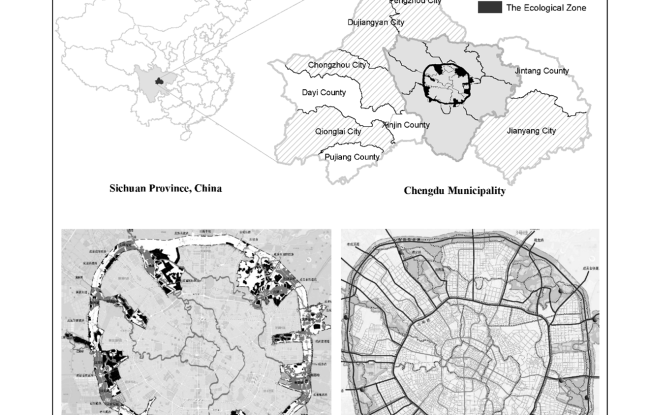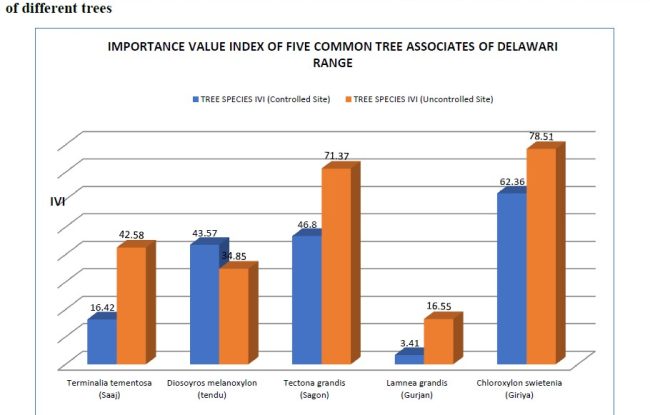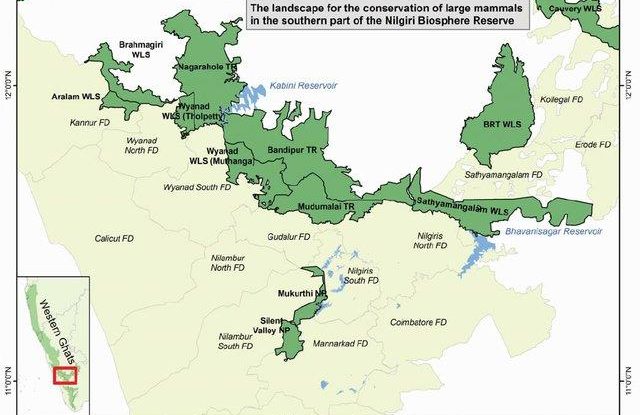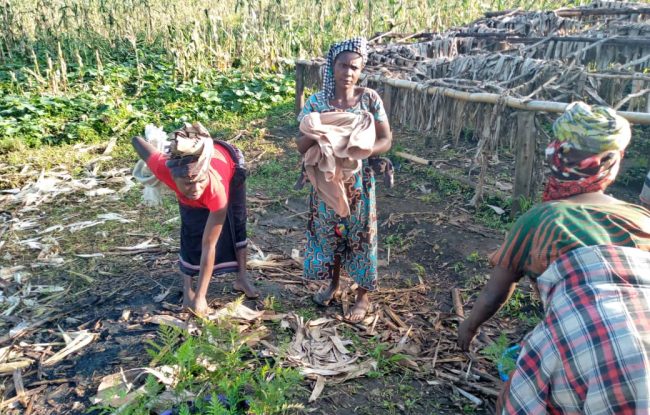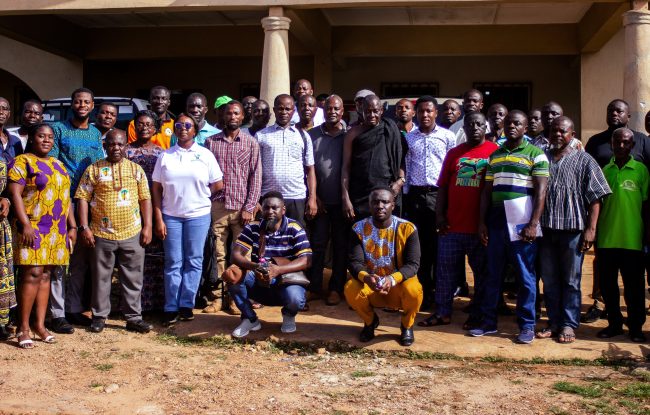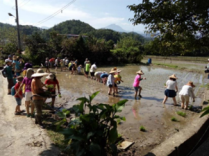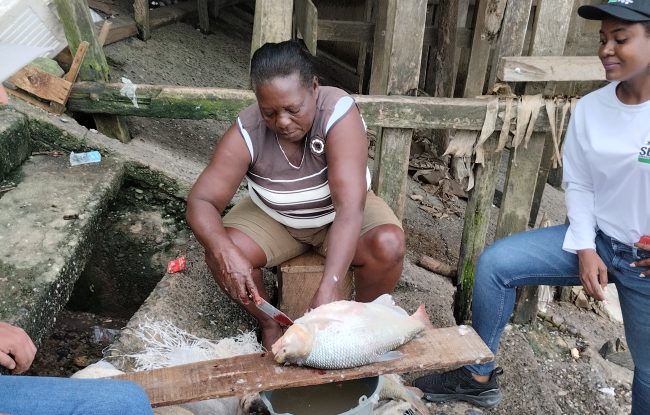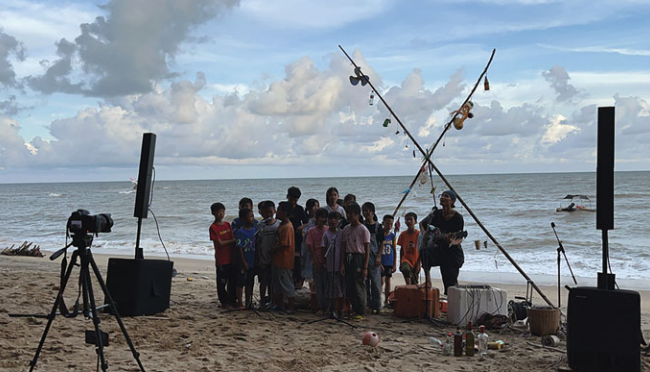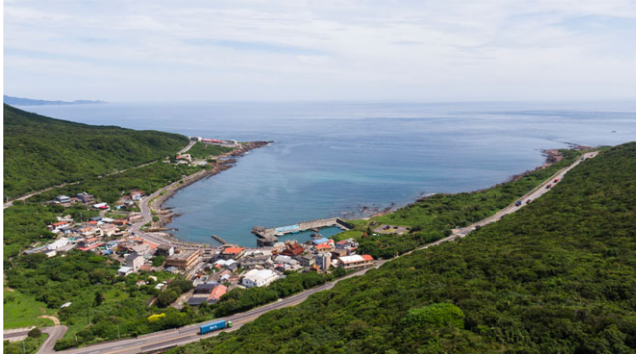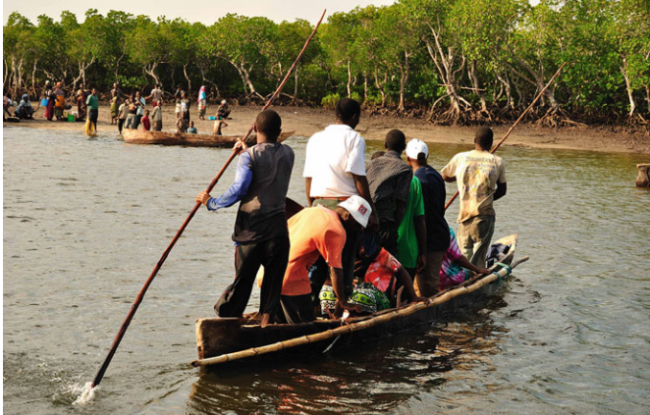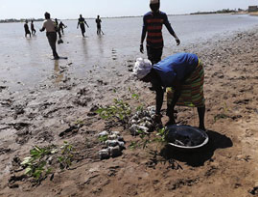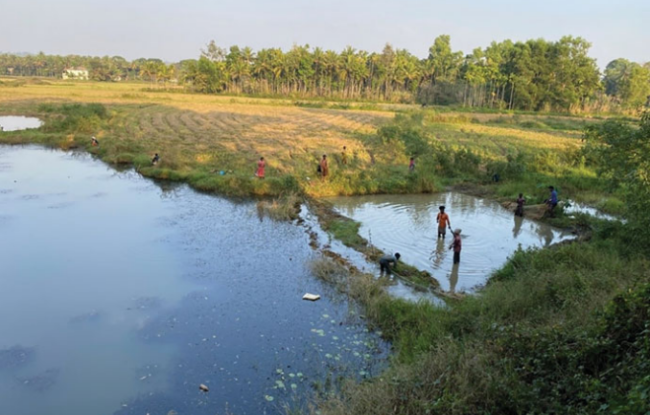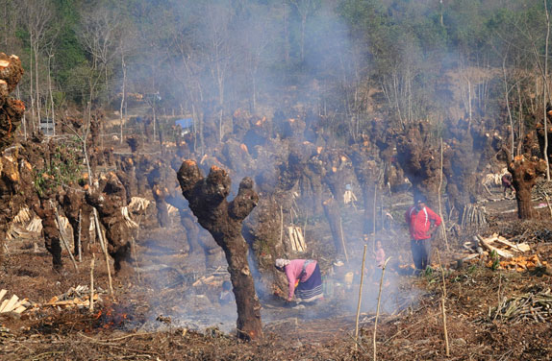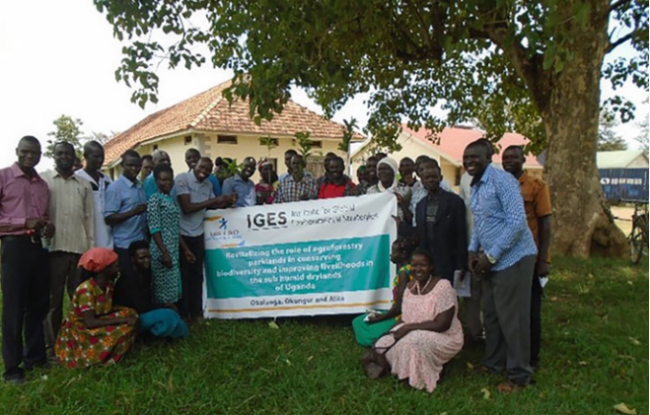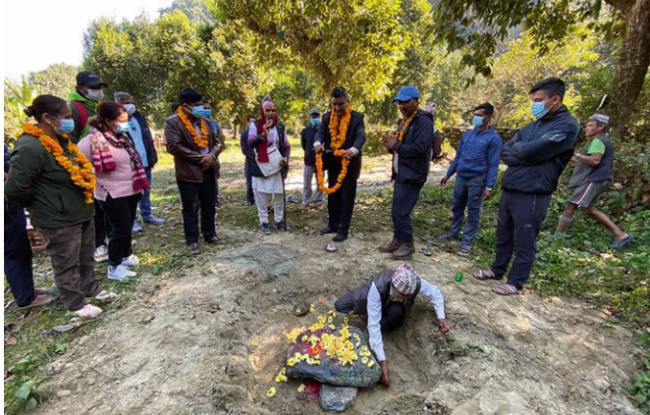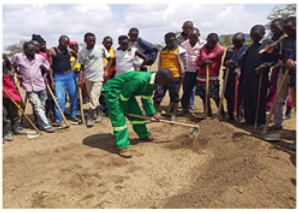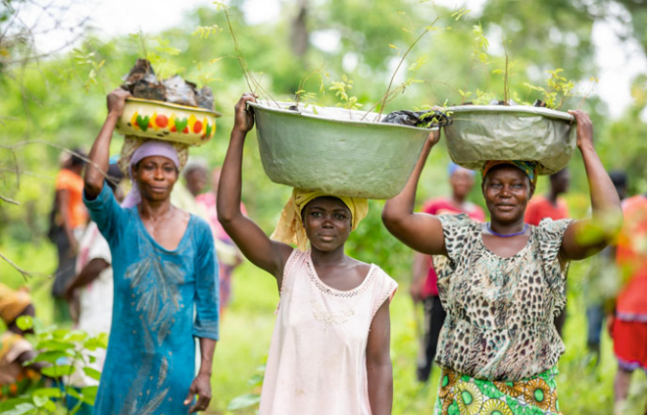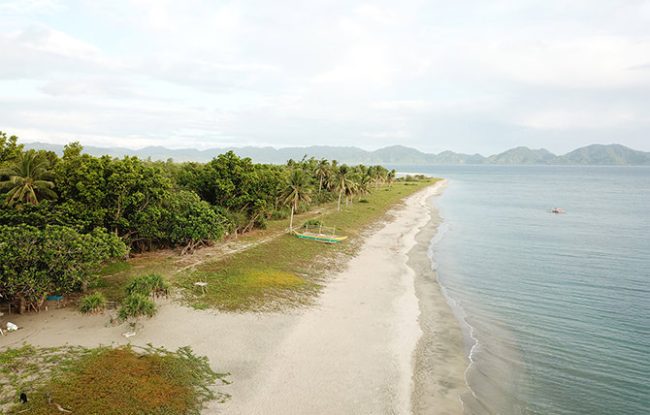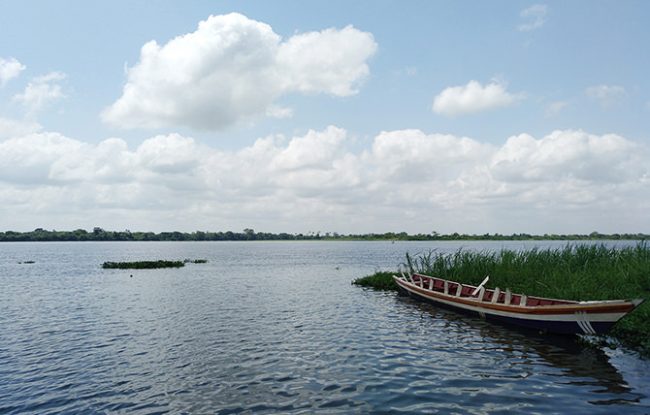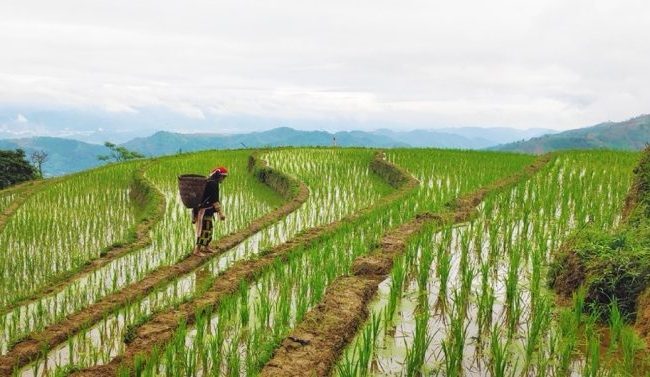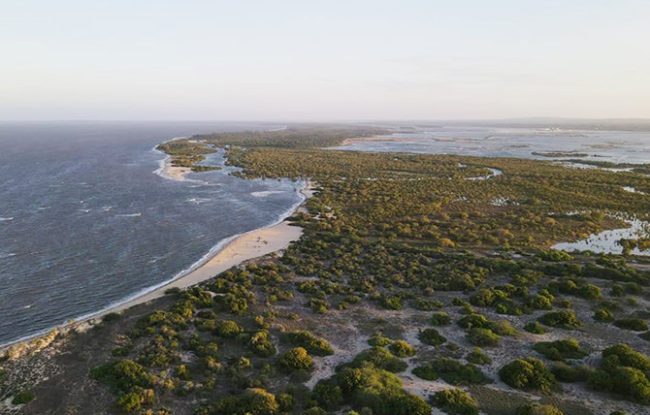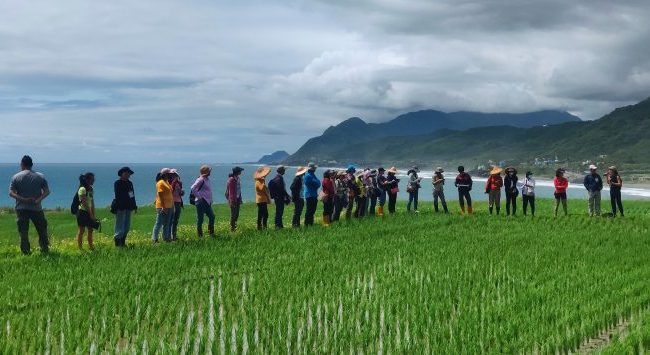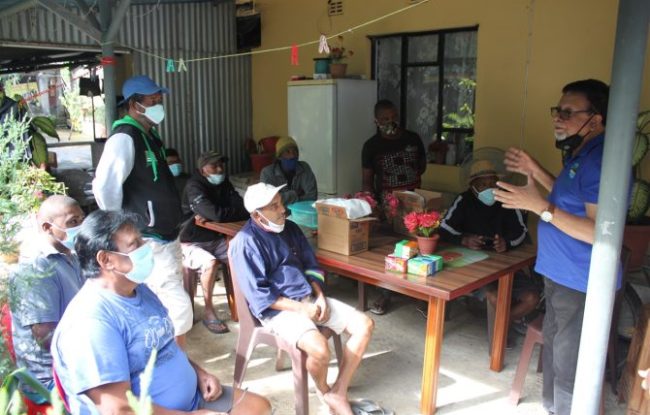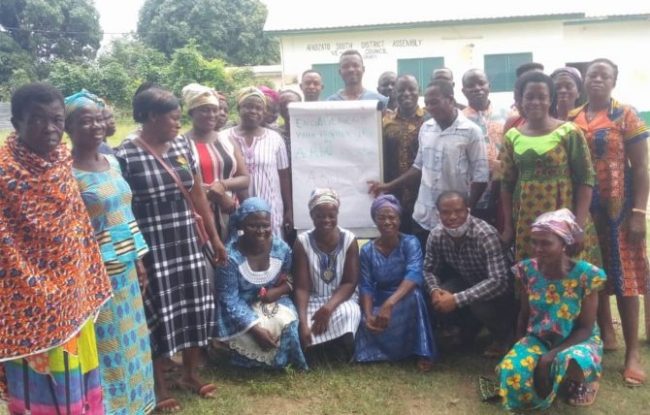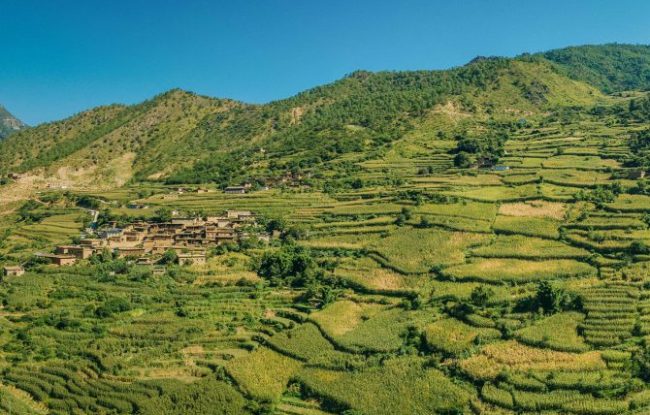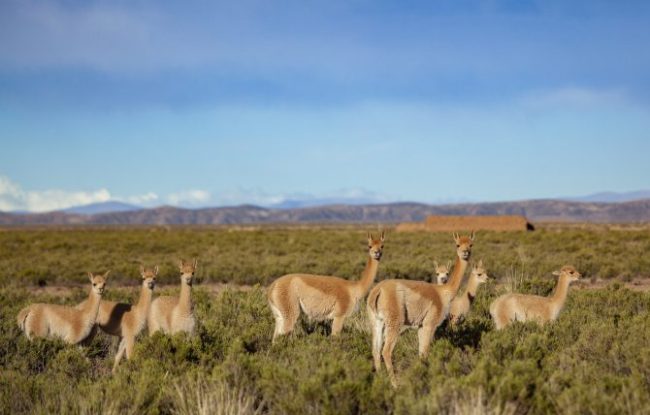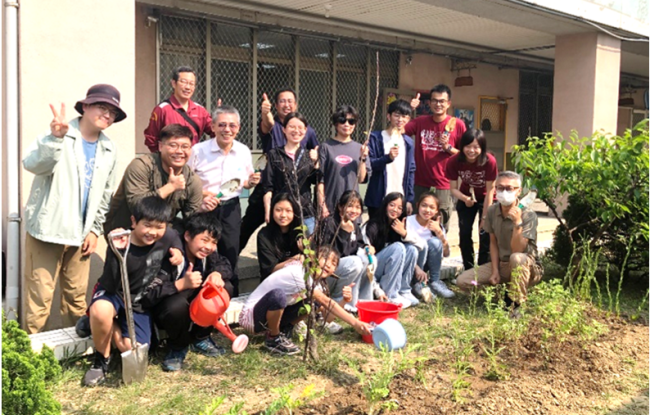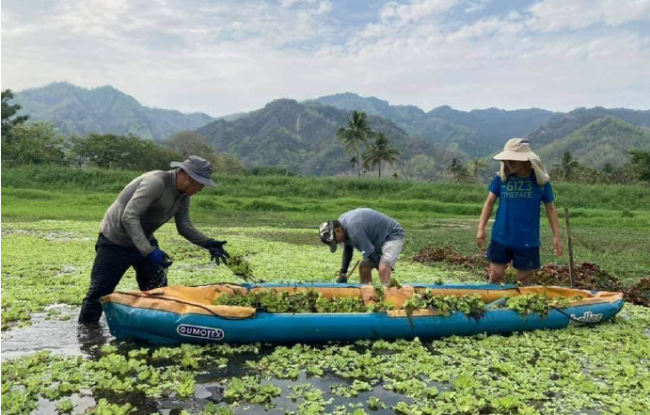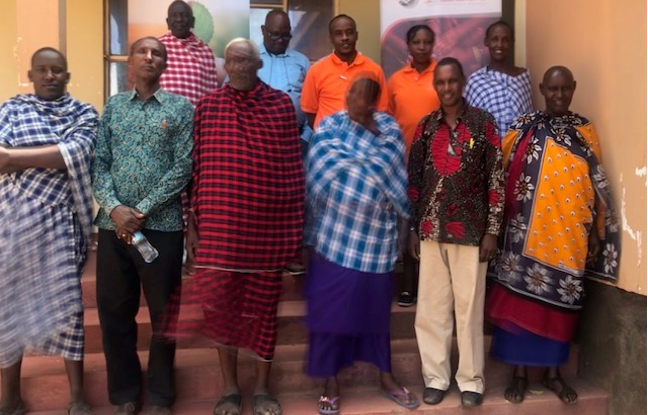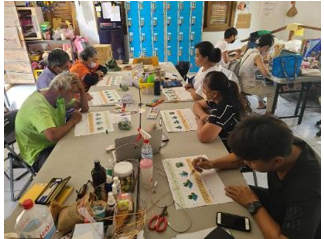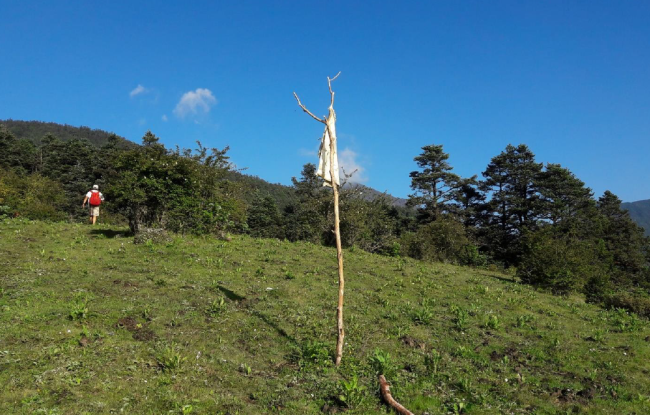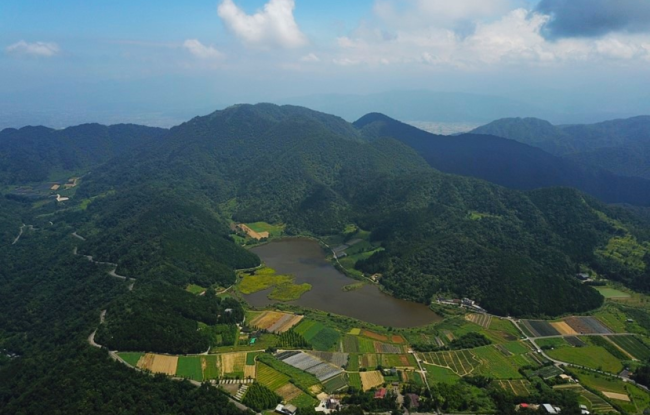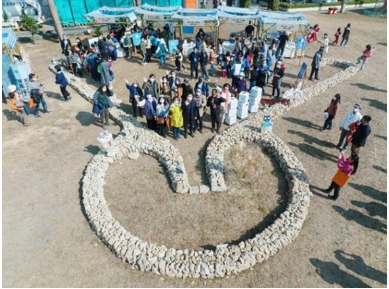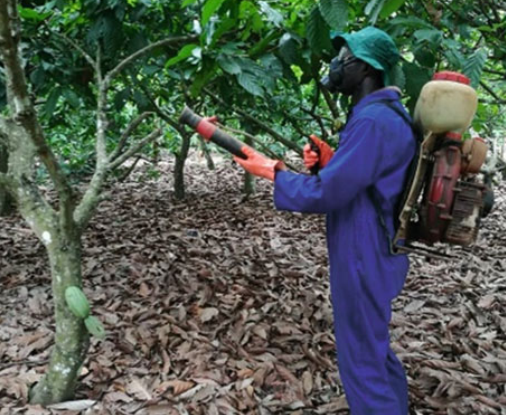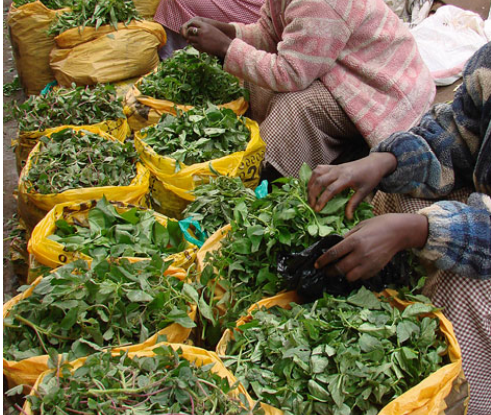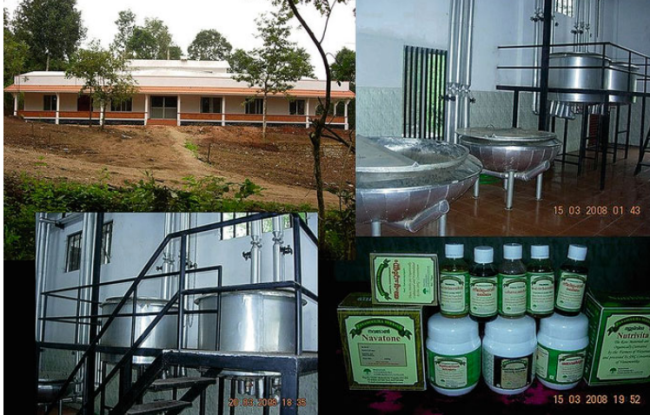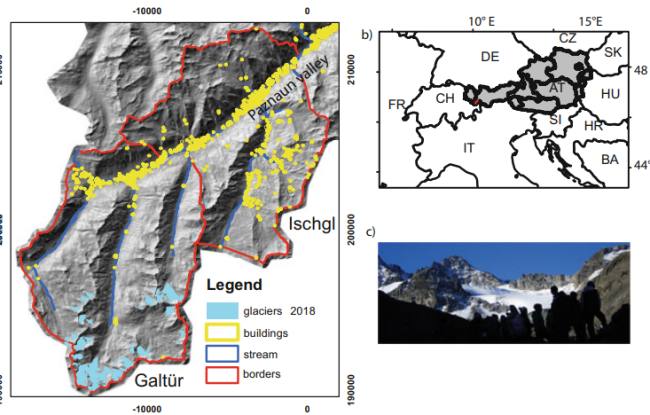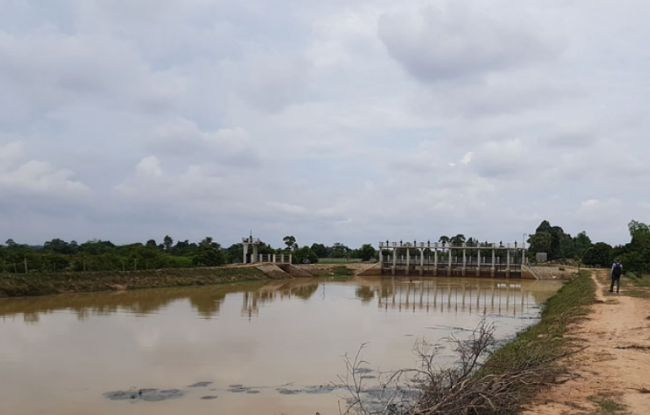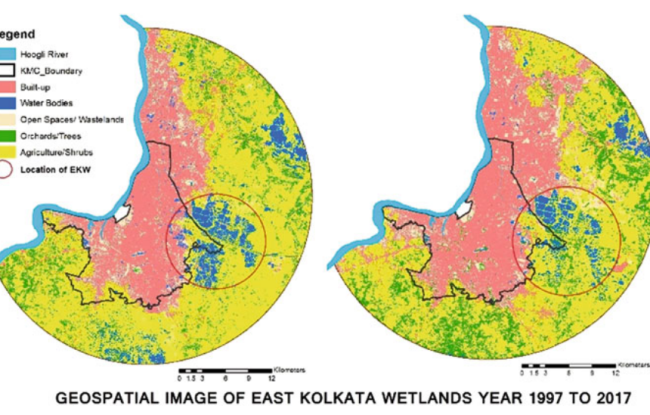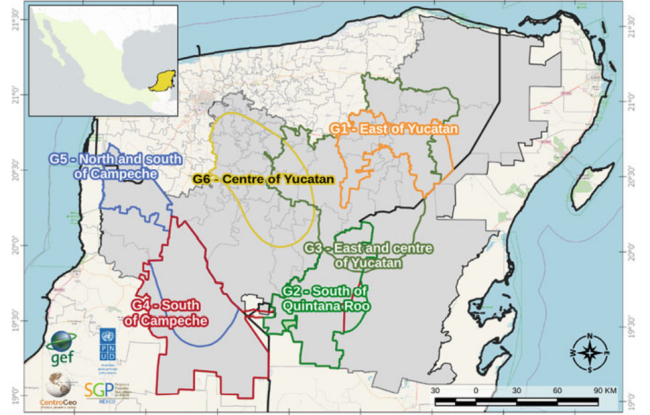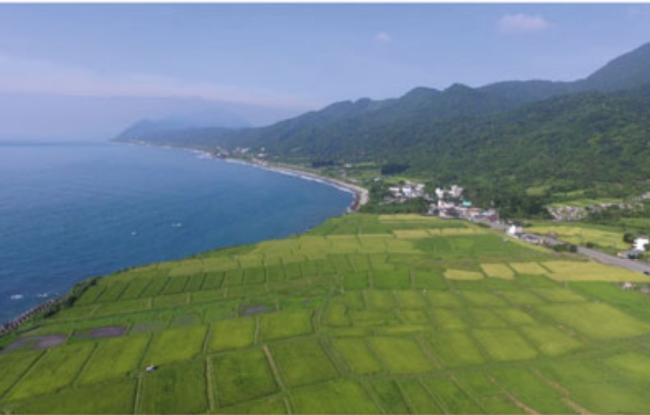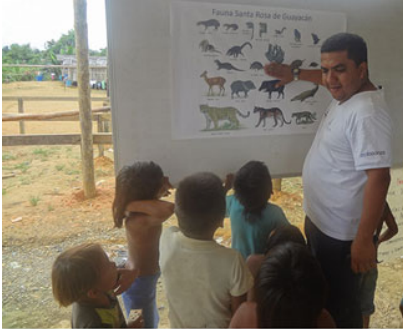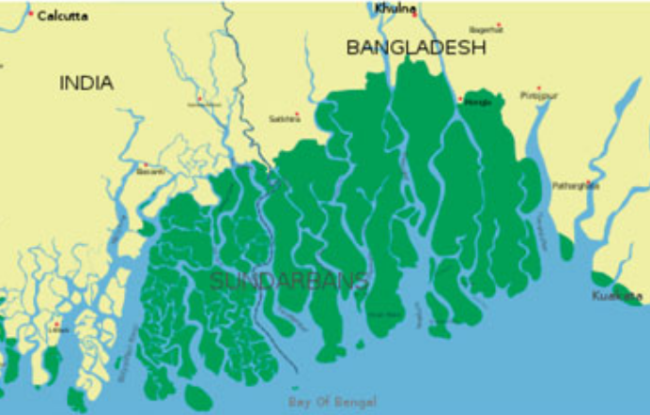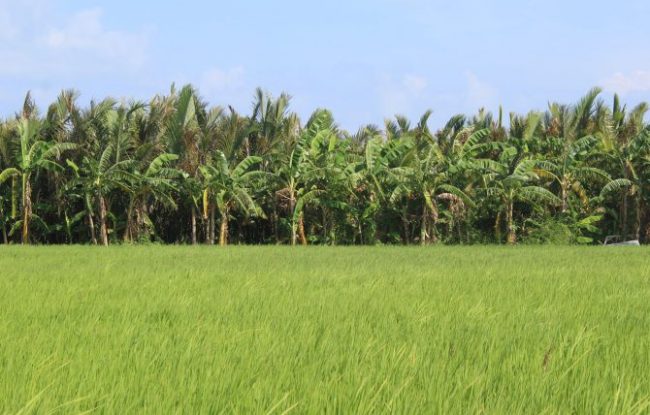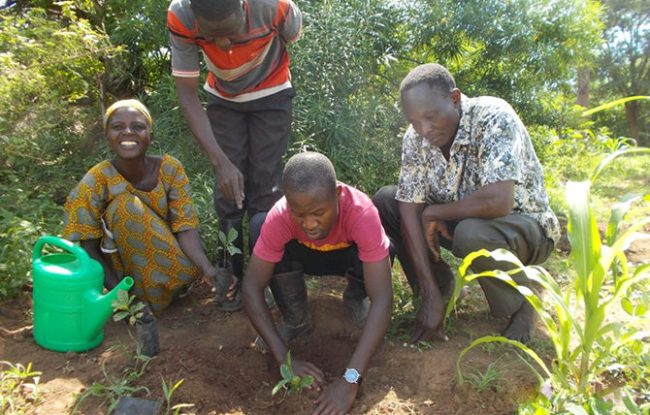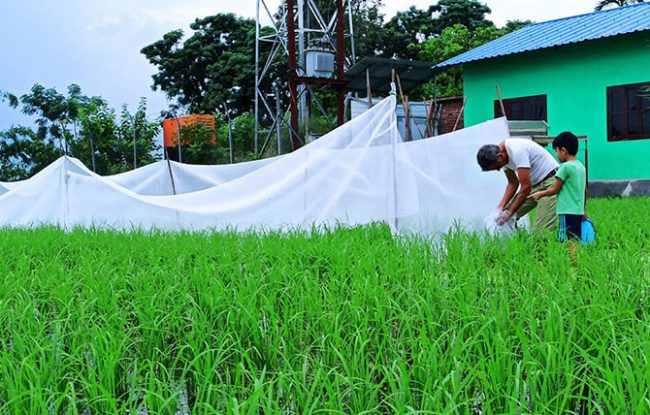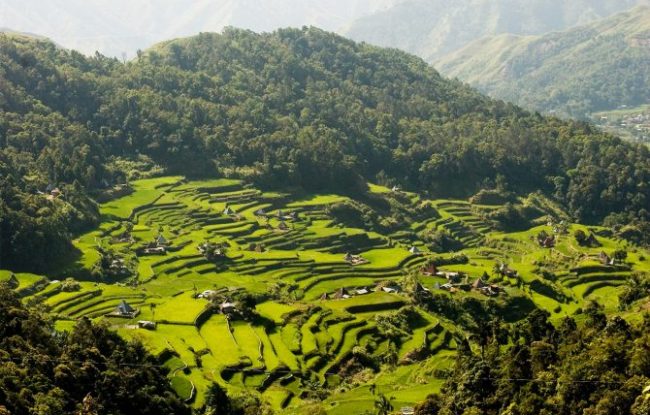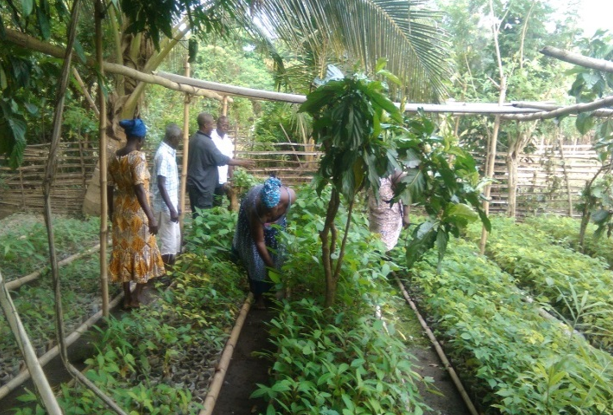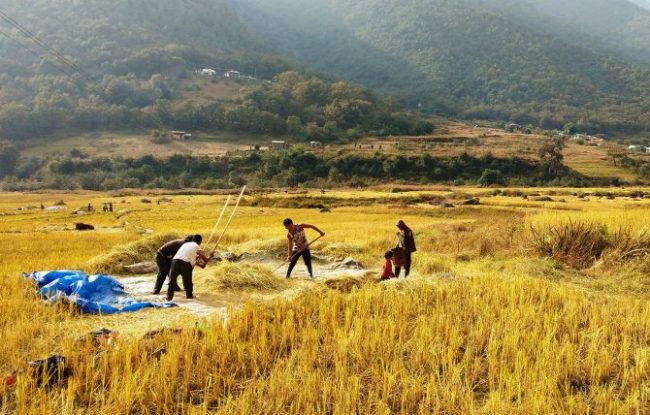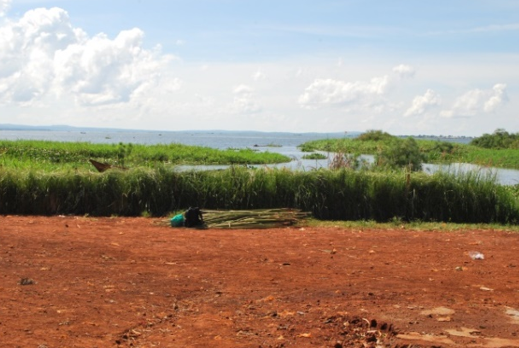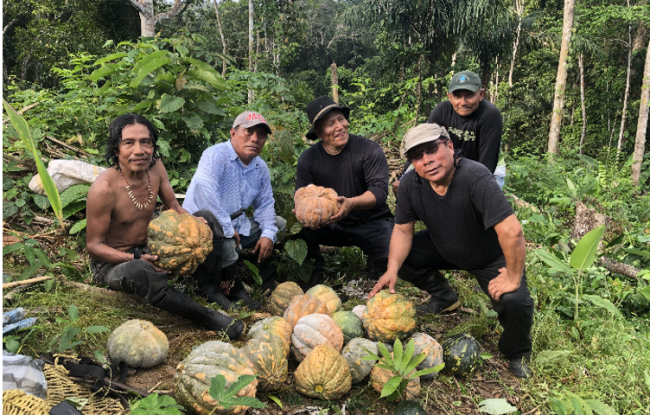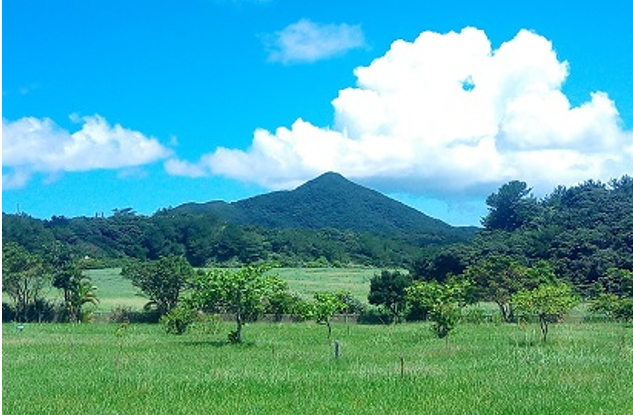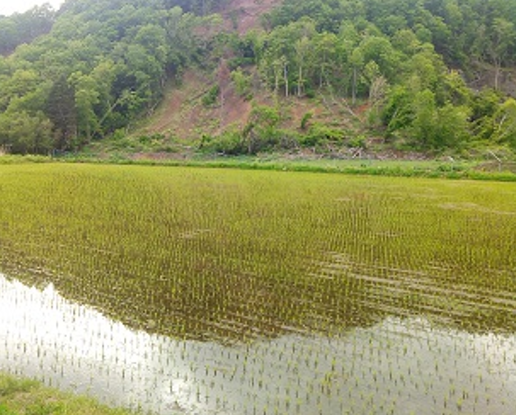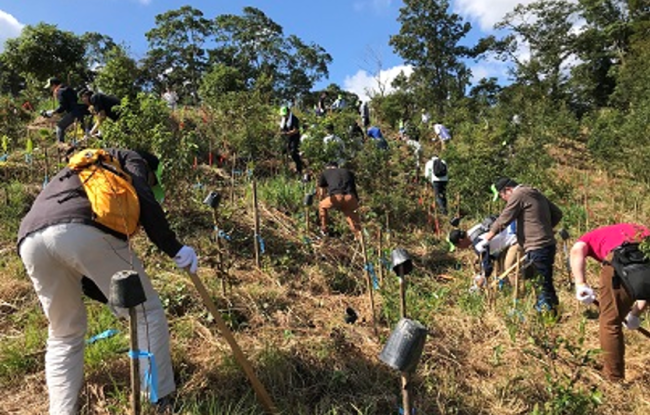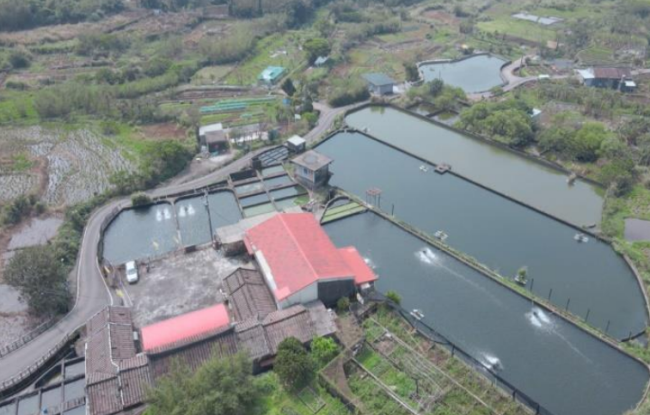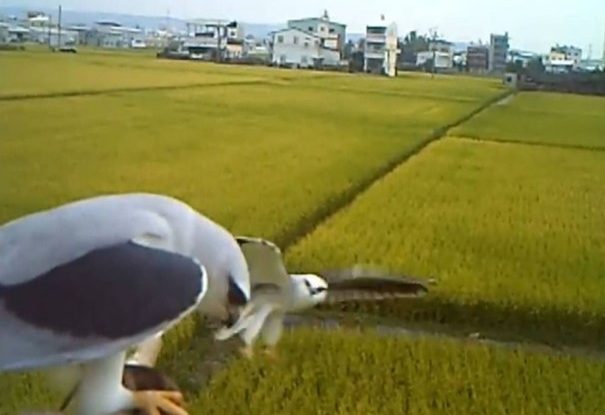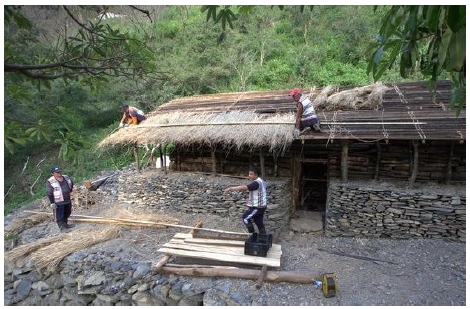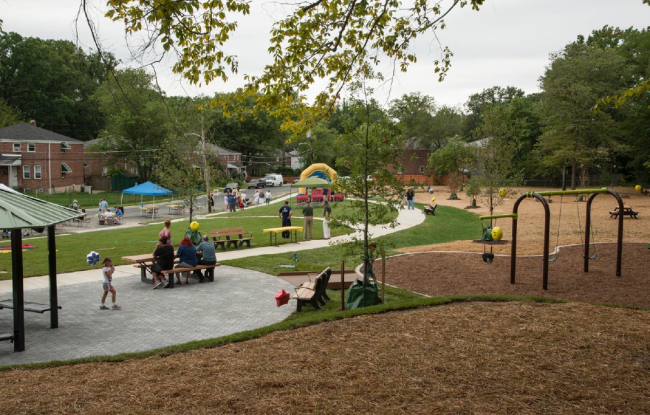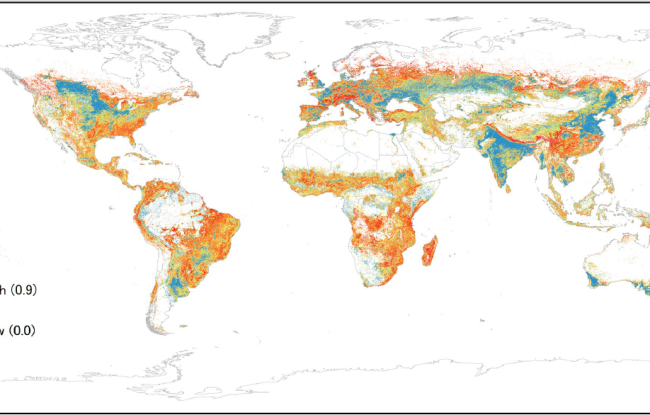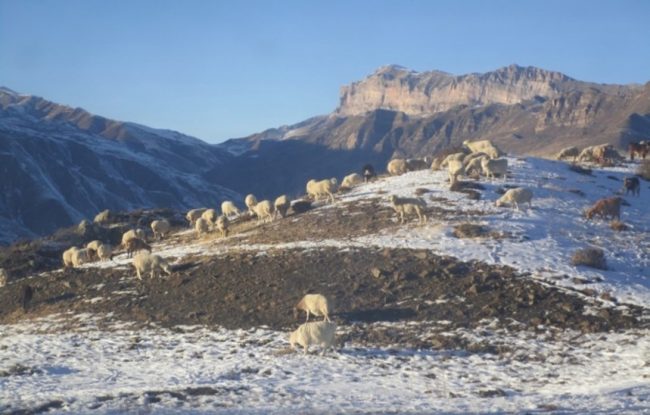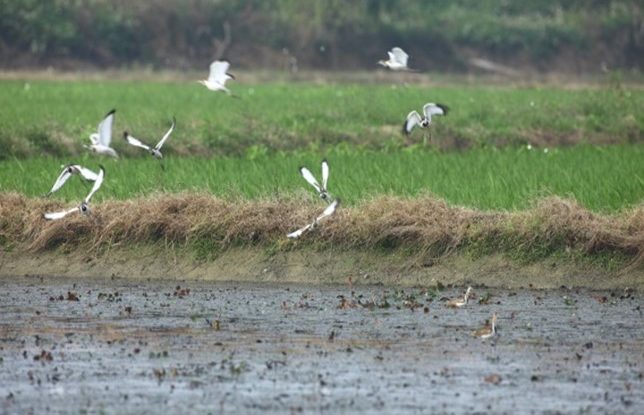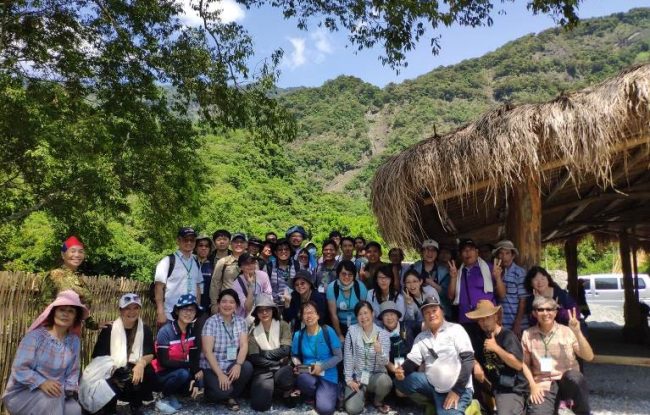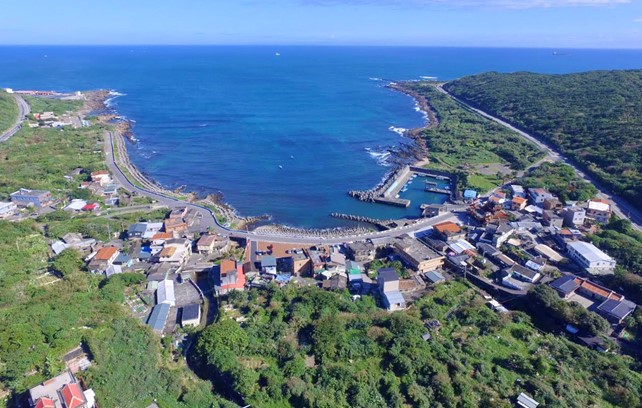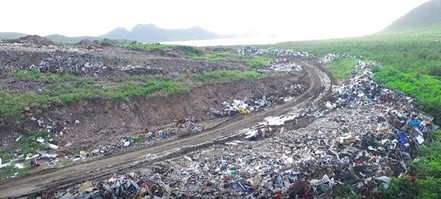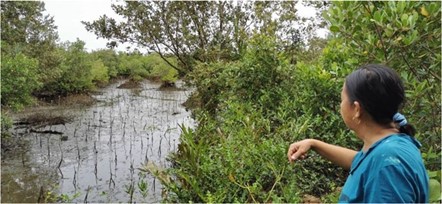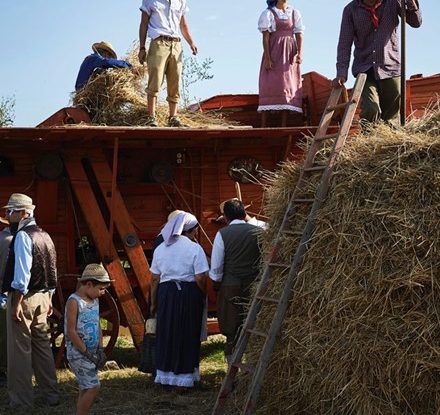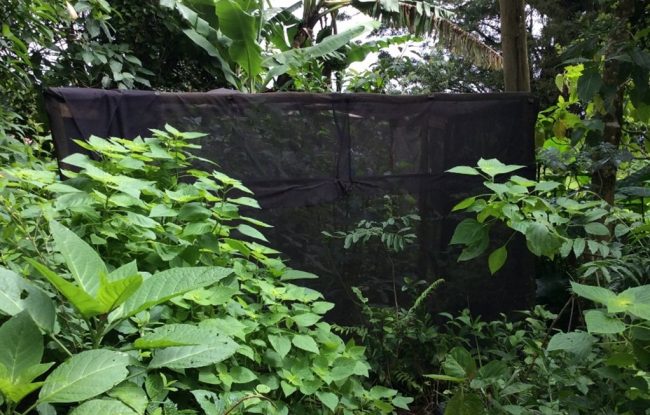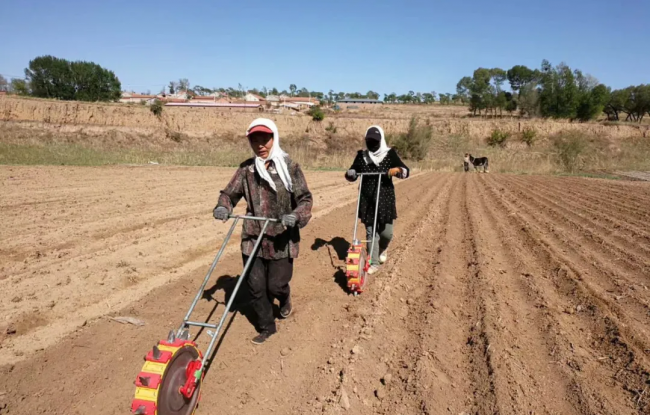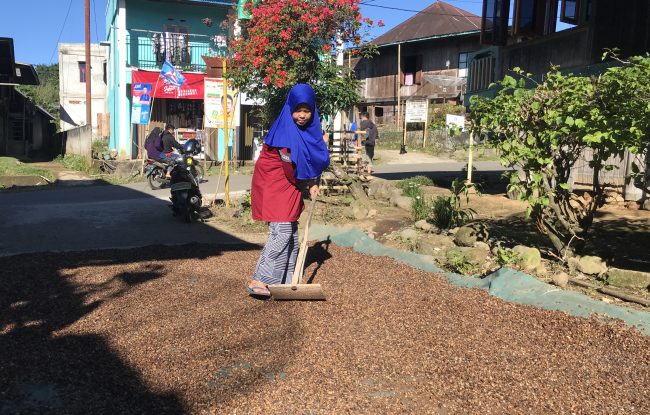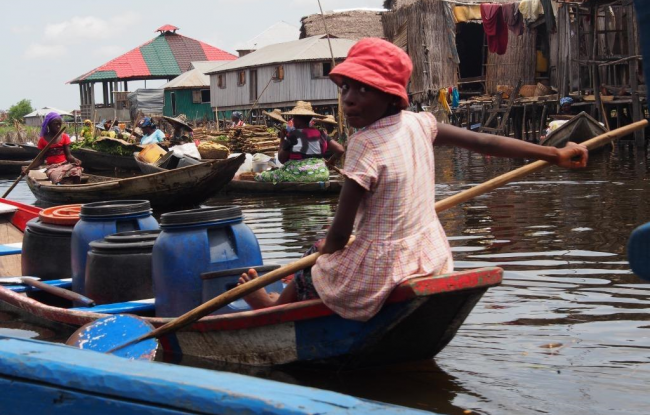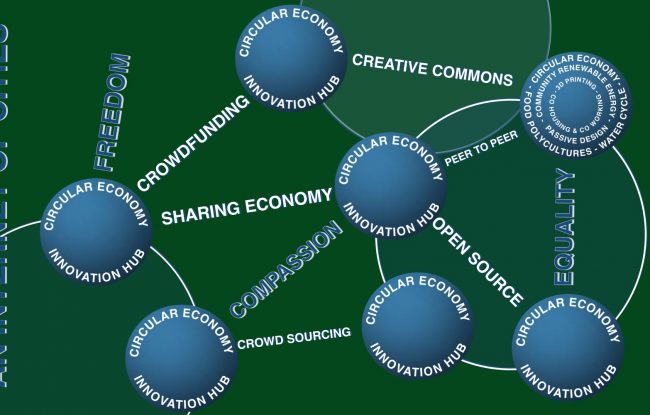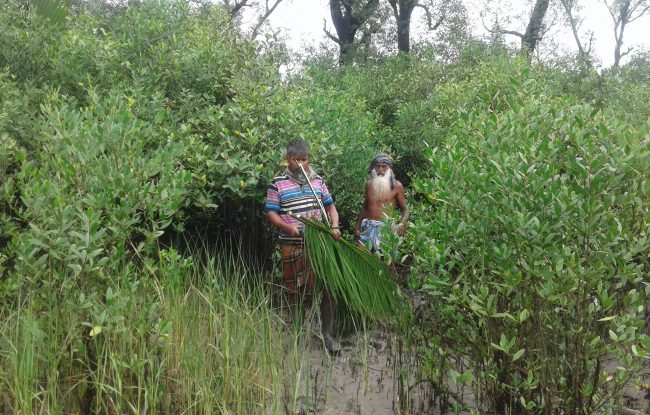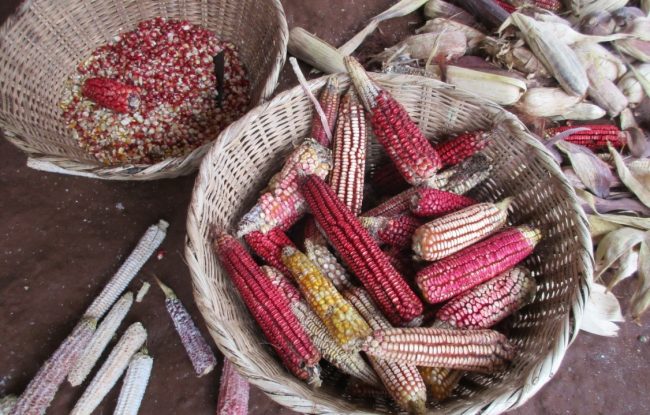


 Australia
Australia Austria
Austria Brazil
Brazil China
China Cuba
Cuba Fiji
Fiji Germany
Germany Ghana
Ghana India
India Indonesia
Indonesia Iran
Iran Italy
Italy Japan
Japan Kenya
Kenya Nepal
Nepal Nigeria
Nigeria Philippines
Philippines Romania
Romania Saudi Arabia
Saudi Arabia Slovakia
Slovakia South Korea
South Korea Sri Lanka
Sri Lanka Syria
Syria Taiwan
Taiwan United States
United States Vietnam
Vietnam

Loading
In the 1990s, City of Chengdu saw rapid urban expansion, leading to significant loss of arable land, the rise of shantytowns, poor industrial development, and environmental degradation. These changes increased urban-rural inequalities. In 2023, an ecological zone was planned and delineated on the city's outskirts to curb urban growth and improve socio-ecological conditions. The goals of Chengdu's ecological zone (CDEZ) include reducing urban-rural income disparities, providing economic opportuni…
SUBMITTING ORGANIZATION Integrated Development Organisation OTHER CONTRIBUTING ORGANIZATIONS Symbiosis International (Deemed University) DATE OF SUBMISSION October 2024 REGION Asia COUNTRY India KEYWORDS Biodiversity indicators, indicators for management, managed forests, biodiversity functions, forest conservation AUTHORS Ajoy K Bhattacharya, Ph D, IFS (R)
SUBMITTING ORGANIZATION Integrated Development Organisation OTHER CONTRIBUTING ORGANIZATIONS Dharti NGO, Bengaluru, Karnataka, India DATE OF SUBMISSION October 2024 REGION Asia COUNTRY India KEYWORDS Tribes, Tourism, Sustainability, Impacts AUTHORS Ajoy K Bhattacharya, Ph D, IFS (R)
https://or…
SUBMITTING ORGANIZATION Imagine and Build the Congo of Tomorrow (ICCOD-NGO) OTHER CONTRIBUTING ORGANIZATIONS Call for the Cry of Congolese Women and Children (ACFE) DATE OF SUBMISSION 9/9/2024 REGION Africa COUNTRY Democratic Republic of Congo KEYWORDS Deforestation; environment AUTHORS Imagine and Build the Congo of Tomorrow (ICCOD-NGO) Summary Sheet The summary sheet for this ca…
Starting with the "Owase City Everyone’s Woodland”, Owase City aims to create new environmental values in primary industries and to sustain and develop them in conjunction with the local economy through environmental restoration efforts that contribute to carbon neutrality and creating forest rich in biodiversity, river restoration, and biodiversity conservation and restoration of marine areas. Kuki-cho, as a Satoyama, will show the creation of a living area that contributes to the restoration o…
In Ghana, land is vital for farming, mining, and forestry, with farming being the economic mainstay. However, mining and illegal logging threaten sustainability. A study in Ahafo and Ashanti regions highlights dwindling forest cover and urges balancing resource use to ensure environmental sustainability and socio-economic development.…
Nanpu's rural ecosystem thrives on balancing ecological diversity and resource sustainability, transcending administrative boundaries. With youth involvement and reduced public sector dependency, the community enhances profitability, supports local elders, and promotes biodiversity through friendly farming, resulting in a 50-70% biodiversity increase.…
For more than 20 years in the Atrato basin in Chocó Colombia, non-native species such as the black cachama (Colossoma macropomum), white cachama (Piaractus brachypomus), and tilapia (Oreochromis spp.) have been commonly captured. The cachama and tilapia were accidentally introduced to the Atrato River as a food security strategy and possible mitigation in areas disturbed by mining (Gutiérrez et al., 2012). Therefore, knowledge about non-native fishes in the Atrato River is necessary to protect i…
Antigua and Barbuda is currently experiencing an expansion in integrated waste management driven by local community groups. These events are catalytic and transformational, fit well into SEPLS methodologies, and contribute to many of the biodiversity targets and Sustainable Development Goals (SDGs). With waste being a direct driver of and major challenge for biodiversity, climate change and land degradation, many positive multi-dimensional impacts are being seen, realised and manifested that cont…
Antigua and Barbuda is currently experiencing an expansion in integrated waste management driven by local community groups. These events are catalytic and transformational, fit well into SEPLS methodologies, and contribute to many of the biodiversity targets and Sustainable Development Goals (SDGs). With waste being a direct driver of and major challenge for biodiversity, climate change and land degradation, many positive multi-dimensional impacts are being seen, realised and manifested that cont…
Antigua and Barbuda is currently experiencing an expansion in integrated waste management driven by local community groups. These events are catalytic and transformational, fit well into SEPLS methodologies, and contribute to many of the biodiversity targets and Sustainable Development Goals (SDGs). With waste being a direct driver of and major challenge for biodiversity, climate change and land degradation, many positive multi-dimensional impacts are being seen, realised and manifested that cont…
Antigua and Barbuda is currently experiencing an expansion in integrated waste management driven by local community groups. These events are catalytic and transformational, fit well into SEPLS methodologies, and contribute to many of the biodiversity targets and Sustainable Development Goals (SDGs). With waste being a direct driver of and major challenge for biodiversity, climate change and land degradation, many positive multi-dimensional impacts are being seen, realised and manifested that cont…
Antigua and Barbuda is currently experiencing an expansion in integrated waste management driven by local community groups. These events are catalytic and transformational, fit well into SEPLS methodologies, and contribute to many of the biodiversity targets and Sustainable Development Goals (SDGs). With waste being a direct driver of and major challenge for biodiversity, climate change and land degradation, many positive multi-dimensional impacts are being seen, realised and manifested that cont…
Antigua and Barbuda is currently experiencing an expansion in integrated waste management driven by local community groups. These events are catalytic and transformational, fit well into SEPLS methodologies, and contribute to many of the biodiversity targets and Sustainable Development Goals (SDGs). With waste being a direct driver of and major challenge for biodiversity, climate change and land degradation, many positive multi-dimensional impacts are being seen, realised and manifested that cont…
Antigua and Barbuda is currently experiencing an expansion in integrated waste management driven by local community groups. These events are catalytic and transformational, fit well into SEPLS methodologies, and contribute to many of the biodiversity targets and Sustainable Development Goals (SDGs). With waste being a direct driver of and major challenge for biodiversity, climate change and land degradation, many positive multi-dimensional impacts are being seen, realised and manifested that cont…
Antigua and Barbuda is currently experiencing an expansion in integrated waste management driven by local community groups. These events are catalytic and transformational, fit well into SEPLS methodologies, and contribute to many of the biodiversity targets and Sustainable Development Goals (SDGs). With waste being a direct driver of and major challenge for biodiversity, climate change and land degradation, many positive multi-dimensional impacts are being seen, realised and manifested that cont…
Antigua and Barbuda is currently experiencing an expansion in integrated waste management driven by local community groups. These events are catalytic and transformational, fit well into SEPLS methodologies, and contribute to many of the biodiversity targets and Sustainable Development Goals (SDGs). With waste being a direct driver of and major challenge for biodiversity, climate change and land degradation, many positive multi-dimensional impacts are being seen, realised and manifested that cont…
Antigua and Barbuda is currently experiencing an expansion in integrated waste management driven by local community groups. These events are catalytic and transformational, fit well into SEPLS methodologies, and contribute to many of the biodiversity targets and Sustainable Development Goals (SDGs). With waste being a direct driver of and major challenge for biodiversity, climate change and land degradation, many positive multi-dimensional impacts are being seen, realised and manifested that cont…
Antigua and Barbuda is currently experiencing an expansion in integrated waste management driven by local community groups. These events are catalytic and transformational, fit well into SEPLS methodologies, and contribute to many of the biodiversity targets and Sustainable Development Goals (SDGs). With waste being a direct driver of and major challenge for biodiversity, climate change and land degradation, many positive multi-dimensional impacts are being seen, realised and manifested that cont…
Antigua and Barbuda is currently experiencing an expansion in integrated waste management driven by local community groups. These events are catalytic and transformational, fit well into SEPLS methodologies, and contribute to many of the biodiversity targets and Sustainable Development Goals (SDGs). With waste being a direct driver of and major challenge for biodiversity, climate change and land degradation, many positive multi-dimensional impacts are being seen, realised and manifested that cont…
The degradation of the natural environment is of alarming importance, which persists even today and one of the obvious consequences of which is the decline in biological diversity. Benin in general and its southern part in particular does not escape this phenomenon of degradation. Indeed, the wetlands of Benin, ecosystems endowed with important resources, undergo an anthropic pressure which does not guarantee the sustainability of the resources which compose them. In addition, these areas are us…
The degradation of the natural environment is of alarming importance, which persists even today and one of the obvious consequences of which is the decline in biological diversity. Benin in general and its southern part in particular does not escape this phenomenon of degradation. Indeed, the wetlands of Benin, ecosystems endowed with important resources, undergo an anthropic pressure which does not guarantee the sustainability of the resources which compose them. In addition, these areas are us…
The degradation of the natural environment is of alarming importance, which persists even today and one of the obvious consequences of which is the decline in biological diversity. Benin in general and its southern part in particular does not escape this phenomenon of degradation. Indeed, the wetlands of Benin, ecosystems endowed with important resources, undergo an anthropic pressure which does not guarantee the sustainability of the resources which compose them. In addition, these areas are us…
The degradation of the natural environment is of alarming importance, which persists even today and one of the obvious consequences of which is the decline in biological diversity. Benin in general and its southern part in particular does not escape this phenomenon of degradation. Indeed, the wetlands of Benin, ecosystems endowed with important resources, undergo an anthropic pressure which does not guarantee the sustainability of the resources which compose them. In addition, these areas are us…
The degradation of the natural environment is of alarming importance, which persists even today and one of the obvious consequences of which is the decline in biological diversity. Benin in general and its southern part in particular does not escape this phenomenon of degradation. Indeed, the wetlands of Benin, ecosystems endowed with important resources, undergo an anthropic pressure which does not guarantee the sustainability of the resources which compose them. In addition, these areas are us…
The degradation of the natural environment is of alarming importance, which persists even today and one of the obvious consequences of which is the decline in biological diversity. Benin in general and its southern part in particular does not escape this phenomenon of degradation. Indeed, the wetlands of Benin, ecosystems endowed with important resources, undergo an anthropic pressure which does not guarantee the sustainability of the resources which compose them. In addition, these areas are us…
The degradation of the natural environment is of alarming importance, which persists even today and one of the obvious consequences of which is the decline in biological diversity. Benin in general and its southern part in particular does not escape this phenomenon of degradation. Indeed, the wetlands of Benin, ecosystems endowed with important resources, undergo an anthropic pressure which does not guarantee the sustainability of the resources which compose them. In addition, these areas are us…
The degradation of the natural environment is of alarming importance, which persists even today and one of the obvious consequences of which is the decline in biological diversity. Benin in general and its southern part in particular does not escape this phenomenon of degradation. Indeed, the wetlands of Benin, ecosystems endowed with important resources, undergo an anthropic pressure which does not guarantee the sustainability of the resources which compose them. In addition, these areas are us…
The degradation of the natural environment is of alarming importance, which persists even today and one of the obvious consequences of which is the decline in biological diversity. Benin in general and its southern part in particular does not escape this phenomenon of degradation. Indeed, the wetlands of Benin, ecosystems endowed with important resources, undergo an anthropic pressure which does not guarantee the sustainability of the resources which compose them. In addition, these areas are us…
The degradation of the natural environment is of alarming importance, which persists even today and one of the obvious consequences of which is the decline in biological diversity. Benin in general and its southern part in particular does not escape this phenomenon of degradation. Indeed, the wetlands of Benin, ecosystems endowed with important resources, undergo an anthropic pressure which does not guarantee the sustainability of the resources which compose them. In addition, these areas are us…
The degradation of the natural environment is of alarming importance, which persists even today and one of the obvious consequences of which is the decline in biological diversity. Benin in general and its southern part in particular does not escape this phenomenon of degradation. Indeed, the wetlands of Benin, ecosystems endowed with important resources, undergo an anthropic pressure which does not guarantee the sustainability of the resources which compose them. In addition, these areas are us…
The traditional practice of cultivating rice paddies has been declining in Japan. The disappearance of rice paddies is not only a loss of cultural and agricultural heritage, but also the rich biodiversity. In 1997, Shumei International began cultivating traditional rice varieties using a Natural Agriculture approach on a 6-acre parcel, located in the Shiga Prefecture, resulting in the appearance of endangered plants and insects. The project included the revitalization of the surrounding forest a…
The traditional practice of cultivating rice paddies has been declining in Japan. The disappearance of rice paddies is not only a loss of cultural and agricultural heritage, but also the rich biodiversity. In 1997, Shumei International began cultivating traditional rice varieties using a Natural Agriculture approach on a 6-acre parcel, located in the Shiga Prefecture, resulting in the appearance of endangered plants and insects. The project included the revitalization of the surrounding forest a…
The traditional practice of cultivating rice paddies has been declining in Japan. The disappearance of rice paddies is not only a loss of cultural and agricultural heritage, but also the rich biodiversity. In 1997, Shumei International began cultivating traditional rice varieties using a Natural Agriculture approach on a 6-acre parcel, located in the Shiga Prefecture, resulting in the appearance of endangered plants and insects. The project included the revitalization of the surrounding forest a…
The traditional practice of cultivating rice paddies has been declining in Japan. The disappearance of rice paddies is not only a loss of cultural and agricultural heritage, but also the rich biodiversity. In 1997, Shumei International began cultivating traditional rice varieties using a Natural Agriculture approach on a 6-acre parcel, located in the Shiga Prefecture, resulting in the appearance of endangered plants and insects. The project included the revitalization of the surrounding forest a…
The traditional practice of cultivating rice paddies has been declining in Japan. The disappearance of rice paddies is not only a loss of cultural and agricultural heritage, but also the rich biodiversity. In 1997, Shumei International began cultivating traditional rice varieties using a Natural Agriculture approach on a 6-acre parcel, located in the Shiga Prefecture, resulting in the appearance of endangered plants and insects. The project included the revitalization of the surrounding forest a…
The traditional practice of cultivating rice paddies has been declining in Japan. The disappearance of rice paddies is not only a loss of cultural and agricultural heritage, but also the rich biodiversity. In 1997, Shumei International began cultivating traditional rice varieties using a Natural Agriculture approach on a 6-acre parcel, located in the Shiga Prefecture, resulting in the appearance of endangered plants and insects. The project included the revitalization of the surrounding forest a…
The traditional practice of cultivating rice paddies has been declining in Japan. The disappearance of rice paddies is not only a loss of cultural and agricultural heritage, but also the rich biodiversity. In 1997, Shumei International began cultivating traditional rice varieties using a Natural Agriculture approach on a 6-acre parcel, located in the Shiga Prefecture, resulting in the appearance of endangered plants and insects. The project included the revitalization of the surrounding forest a…
The traditional practice of cultivating rice paddies has been declining in Japan. The disappearance of rice paddies is not only a loss of cultural and agricultural heritage, but also the rich biodiversity. In 1997, Shumei International began cultivating traditional rice varieties using a Natural Agriculture approach on a 6-acre parcel, located in the Shiga Prefecture, resulting in the appearance of endangered plants and insects. The project included the revitalization of the surrounding forest a…
The traditional practice of cultivating rice paddies has been declining in Japan. The disappearance of rice paddies is not only a loss of cultural and agricultural heritage, but also the rich biodiversity. In 1997, Shumei International began cultivating traditional rice varieties using a Natural Agriculture approach on a 6-acre parcel, located in the Shiga Prefecture, resulting in the appearance of endangered plants and insects. The project included the revitalization of the surrounding forest a…
The traditional practice of cultivating rice paddies has been declining in Japan. The disappearance of rice paddies is not only a loss of cultural and agricultural heritage, but also the rich biodiversity. In 1997, Shumei International began cultivating traditional rice varieties using a Natural Agriculture approach on a 6-acre parcel, located in the Shiga Prefecture, resulting in the appearance of endangered plants and insects. The project included the revitalization of the surrounding forest a…
The traditional practice of cultivating rice paddies has been declining in Japan. The disappearance of rice paddies is not only a loss of cultural and agricultural heritage, but also the rich biodiversity. In 1997, Shumei International began cultivating traditional rice varieties using a Natural Agriculture approach on a 6-acre parcel, located in the Shiga Prefecture, resulting in the appearance of endangered plants and insects. The project included the revitalization of the surrounding forest a…
Antigua and Barbuda is currently experiencing an expansion in integrated waste management driven by local community groups. These events are catalytic and transformational, fit well into SEPLS methodologies, and contribute to many of the biodiversity targets and Sustainable Development Goals (SDGs). With waste being a direct driver of and major challenge for biodiversity, climate change and land degradation, many positive multi-dimensional impacts are being seen, realised and manifested that cont…
Antigua and Barbuda is currently experiencing an expansion in integrated waste management driven by local community groups. These events are catalytic and transformational, fit well into SEPLS methodologies, and contribute to many of the biodiversity targets and Sustainable Development Goals (SDGs). With waste being a direct driver of and major challenge for biodiversity, climate change and land degradation, many positive multi-dimensional impacts are being seen, realised and manifested that cont…
Antigua and Barbuda is currently experiencing an expansion in integrated waste management driven by local community groups. These events are catalytic and transformational, fit well into SEPLS methodologies, and contribute to many of the biodiversity targets and Sustainable Development Goals (SDGs). With waste being a direct driver of and major challenge for biodiversity, climate change and land degradation, many positive multi-dimensional impacts are being seen, realised and manifested that cont…
Antigua and Barbuda is currently experiencing an expansion in integrated waste management driven by local community groups. These events are catalytic and transformational, fit well into SEPLS methodologies, and contribute to many of the biodiversity targets and Sustainable Development Goals (SDGs). With waste being a direct driver of and major challenge for biodiversity, climate change and land degradation, many positive multi-dimensional impacts are being seen, realised and manifested that cont…
Antigua and Barbuda is currently experiencing an expansion in integrated waste management driven by local community groups. These events are catalytic and transformational, fit well into SEPLS methodologies, and contribute to many of the biodiversity targets and Sustainable Development Goals (SDGs). With waste being a direct driver of and major challenge for biodiversity, climate change and land degradation, many positive multi-dimensional impacts are being seen, realised and manifested that cont…
Antigua and Barbuda is currently experiencing an expansion in integrated waste management driven by local community groups. These events are catalytic and transformational, fit well into SEPLS methodologies, and contribute to many of the biodiversity targets and Sustainable Development Goals (SDGs). With waste being a direct driver of and major challenge for biodiversity, climate change and land degradation, many positive multi-dimensional impacts are being seen, realised and manifested that cont…
Antigua and Barbuda is currently experiencing an expansion in integrated waste management driven by local community groups. These events are catalytic and transformational, fit well into SEPLS methodologies, and contribute to many of the biodiversity targets and Sustainable Development Goals (SDGs). With waste being a direct driver of and major challenge for biodiversity, climate change and land degradation, many positive multi-dimensional impacts are being seen, realised and manifested that cont…
Antigua and Barbuda is currently experiencing an expansion in integrated waste management driven by local community groups. These events are catalytic and transformational, fit well into SEPLS methodologies, and contribute to many of the biodiversity targets and Sustainable Development Goals (SDGs). With waste being a direct driver of and major challenge for biodiversity, climate change and land degradation, many positive multi-dimensional impacts are being seen, realised and manifested that cont…
Antigua and Barbuda is currently experiencing an expansion in integrated waste management driven by local community groups. These events are catalytic and transformational, fit well into SEPLS methodologies, and contribute to many of the biodiversity targets and Sustainable Development Goals (SDGs). With waste being a direct driver of and major challenge for biodiversity, climate change and land degradation, many positive multi-dimensional impacts are being seen, realised and manifested that cont…
Antigua and Barbuda is currently experiencing an expansion in integrated waste management driven by local community groups. These events are catalytic and transformational, fit well into SEPLS methodologies, and contribute to many of the biodiversity targets and Sustainable Development Goals (SDGs). With waste being a direct driver of and major challenge for biodiversity, climate change and land degradation, many positive multi-dimensional impacts are being seen, realised and manifested that cont…
Antigua and Barbuda is currently experiencing an expansion in integrated waste management driven by local community groups. These events are catalytic and transformational, fit well into SEPLS methodologies, and contribute to many of the biodiversity targets and Sustainable Development Goals (SDGs). With waste being a direct driver of and major challenge for biodiversity, climate change and land degradation, many positive multi-dimensional impacts are being seen, realised and manifested that cont…
The degradation of the natural environment is of alarming importance, which persists even today and one of the obvious consequences of which is the decline in biological diversity. Benin in general and its southern part in particular does not escape this phenomenon of degradation. Indeed, the wetlands of Benin, ecosystems endowed with important resources, undergo an anthropic pressure which does not guarantee the sustainability of the resources which compose them. In addition, these areas are us…
The degradation of the natural environment is of alarming importance, which persists even today and one of the obvious consequences of which is the decline in biological diversity. Benin in general and its southern part in particular does not escape this phenomenon of degradation. Indeed, the wetlands of Benin, ecosystems endowed with important resources, undergo an anthropic pressure which does not guarantee the sustainability of the resources which compose them. In addition, these areas are us…
The degradation of the natural environment is of alarming importance, which persists even today and one of the obvious consequences of which is the decline in biological diversity. Benin in general and its southern part in particular does not escape this phenomenon of degradation. Indeed, the wetlands of Benin, ecosystems endowed with important resources, undergo an anthropic pressure which does not guarantee the sustainability of the resources which compose them. In addition, these areas are us…
The degradation of the natural environment is of alarming importance, which persists even today and one of the obvious consequences of which is the decline in biological diversity. Benin in general and its southern part in particular does not escape this phenomenon of degradation. Indeed, the wetlands of Benin, ecosystems endowed with important resources, undergo an anthropic pressure which does not guarantee the sustainability of the resources which compose them. In addition, these areas are us…
The degradation of the natural environment is of alarming importance, which persists even today and one of the obvious consequences of which is the decline in biological diversity. Benin in general and its southern part in particular does not escape this phenomenon of degradation. Indeed, the wetlands of Benin, ecosystems endowed with important resources, undergo an anthropic pressure which does not guarantee the sustainability of the resources which compose them. In addition, these areas are us…
The degradation of the natural environment is of alarming importance, which persists even today and one of the obvious consequences of which is the decline in biological diversity. Benin in general and its southern part in particular does not escape this phenomenon of degradation. Indeed, the wetlands of Benin, ecosystems endowed with important resources, undergo an anthropic pressure which does not guarantee the sustainability of the resources which compose them. In addition, these areas are us…
Eutrophication in Lake Victoria is associated with the growth and spread of water hyacinth weed (eichhornia crassipes). This case study describes Lake Victoria ecosystem restoration work undertaken by Environmental Protection Information Centre (EPIC), in conjunction with her partners and lakeside communities. The project was designed mainly to address Eutrophication, at the same time to reverse land degradation in the surrounding watersheds through climate change resilience enhancement and boos…
The degradation of the natural environment is of alarming importance, which persists even today and one of the obvious consequences of which is the decline in biological diversity. Benin in general and its southern part in particular does not escape this phenomenon of degradation. Indeed, the wetlands of Benin, ecosystems endowed with important resources, undergo an anthropic pressure which does not guarantee the sustainability of the resources which compose them. In addition, these areas are us…
The degradation of the natural environment is of alarming importance, which persists even today and one of the obvious consequences of which is the decline in biological diversity. Benin in general and its southern part in particular does not escape this phenomenon of degradation. Indeed, the wetlands of Benin, ecosystems endowed with important resources, undergo an anthropic pressure which does not guarantee the sustainability of the resources which compose them. In addition, these areas are us…
The traditional practice of cultivating rice paddies has been declining in Japan. The disappearance of rice paddies is not only a loss of cultural and agricultural heritage, but also the rich biodiversity. In 1997, Shumei International began cultivating traditional rice varieties using a Natural Agriculture approach on a 6-acre parcel, located in the Shiga Prefecture, resulting in the appearance of endangered plants and insects. The project included the revitalization of the surrounding forest a…
The traditional practice of cultivating rice paddies has been declining in Japan. The disappearance of rice paddies is not only a loss of cultural and agricultural heritage, but also the rich biodiversity. In 1997, Shumei International began cultivating traditional rice varieties using a Natural Agriculture approach on a 6-acre parcel, located in the Shiga Prefecture, resulting in the appearance of endangered plants and insects. The project included the revitalization of the surrounding forest a…
The traditional practice of cultivating rice paddies has been declining in Japan. The disappearance of rice paddies is not only a loss of cultural and agricultural heritage, but also the rich biodiversity. In 1997, Shumei International began cultivating traditional rice varieties using a Natural Agriculture approach on a 6-acre parcel, located in the Shiga Prefecture, resulting in the appearance of endangered plants and insects. The project included the revitalization of the surrounding forest a…
The traditional practice of cultivating rice paddies has been declining in Japan. The disappearance of rice paddies is not only a loss of cultural and agricultural heritage, but also the rich biodiversity. In 1997, Shumei International began cultivating traditional rice varieties using a Natural Agriculture approach on a 6-acre parcel, located in the Shiga Prefecture, resulting in the appearance of endangered plants and insects. The project included the revitalization of the surrounding forest a…
The traditional practice of cultivating rice paddies has been declining in Japan. The disappearance of rice paddies is not only a loss of cultural and agricultural heritage, but also the rich biodiversity. In 1997, Shumei International began cultivating traditional rice varieties using a Natural Agriculture approach on a 6-acre parcel, located in the Shiga Prefecture, resulting in the appearance of endangered plants and insects. The project included the revitalization of the surrounding forest a…
The traditional practice of cultivating rice paddies has been declining in Japan. The disappearance of rice paddies is not only a loss of cultural and agricultural heritage, but also the rich biodiversity. In 1997, Shumei International began cultivating traditional rice varieties using a Natural Agriculture approach on a 6-acre parcel, located in the Shiga Prefecture, resulting in the appearance of endangered plants and insects. The project included the revitalization of the surrounding forest a…
The traditional practice of cultivating rice paddies has been declining in Japan. The disappearance of rice paddies is not only a loss of cultural and agricultural heritage, but also the rich biodiversity. In 1997, Shumei International began cultivating traditional rice varieties using a Natural Agriculture approach on a 6-acre parcel, located in the Shiga Prefecture, resulting in the appearance of endangered plants and insects. The project included the revitalization of the surrounding forest a…
The traditional practice of cultivating rice paddies has been declining in Japan. The disappearance of rice paddies is not only a loss of cultural and agricultural heritage, but also the rich biodiversity. In 1997, Shumei International began cultivating traditional rice varieties using a Natural Agriculture approach on a 6-acre parcel, located in the Shiga Prefecture, resulting in the appearance of endangered plants and insects. The project included the revitalization of the surrounding forest a…
The traditional practice of cultivating rice paddies has been declining in Japan. The disappearance of rice paddies is not only a loss of cultural and agricultural heritage, but also the rich biodiversity. In 1997, Shumei International began cultivating traditional rice varieties using a Natural Agriculture approach on a 6-acre parcel, located in the Shiga Prefecture, resulting in the appearance of endangered plants and insects. The project included the revitalization of the surrounding forest a…
The traditional practice of cultivating rice paddies has been declining in Japan. The disappearance of rice paddies is not only a loss of cultural and agricultural heritage, but also the rich biodiversity. In 1997, Shumei International began cultivating traditional rice varieties using a Natural Agriculture approach on a 6-acre parcel, located in the Shiga Prefecture, resulting in the appearance of endangered plants and insects. The project included the revitalization of the surrounding forest a…
The traditional practice of cultivating rice paddies has been declining in Japan. The disappearance of rice paddies is not only a loss of cultural and agricultural heritage, but also the rich biodiversity. In 1997, Shumei International began cultivating traditional rice varieties using a Natural Agriculture approach on a 6-acre parcel, located in the Shiga Prefecture, resulting in the appearance of endangered plants and insects. The project included the revitalization of the surrounding forest a…
In this case study report we describe the distinctive high-altitude socio-ecological production landscapes of the Bagulal, Chamalal and Godoberi ethnolinguistic enclaves in the valley of one of Dagestan’s most important river arteries and examine factors that have contributed to both their formation and continuing function as balanced geoecosystems for thousands of years after they were first permanently inhabited by man. Particular attention has been paid in the course of undertaking this case …
In the past, the pheasant-tailed jacana (Hydrophasianus chirurgus) had breeding populations in many parts of Taiwan. This changed as many natural wetlands were converted into fish or shrimp ponds, land was reclamation for development, lowlands were filled or damned for water storage, water flows were altered for irrigation, and pesticide use by farmers was rampant. By the late 1980s, Tainan’s Chianan plain was the site of the last stable population in Taiwan. In 1989 the Council of Agriculture d…
Government - Community collaboration for natural ecological sustainability-Yi Hsin Community, Nantou
Yi Hsin Community is the major production area of water bamboo in Taiwan. Excessive agricultural behavior and artificial development in the early period resulted in the destruction of the ecology and water source environment, and the native fish in Taiwan, Pararasbora moltrechti, suffered from the crisis of extinction. The Council of Agriculture, Executive Yuan, proclaimed Pararasbora moltrechti as a rare protected species in 2009 (Council of Agriculture Executive Yuan R.O.C [COA], 2009), when i…
Taiwan Partnership for the Satoyama Initiative (TPSI) was proposed by NDHU in 2014 and adopted by the Forestry Bureau in 2015. TPSI embodies an integrated approach to solving conservation, revitalisation and sustainability issues in Taiwan’s SEPLS by the means of building up a national multi-stakeholder partnership network of like-minded stakeholders and consolidating their complementary strengths and resources for collaborative problem-solving. TPSI works with IPSI on a nation-wide implementati…
The potential contribution of Indigenous philosophy to global sustainability remains largely unrealized. A significant part of the challenge is the need to actualize the United Nations Declaration on the Rights of In-digenous Peoples within the jurisdictions of specific countries. The Philippines represents countries where Indigeneity is defined more by community of residence and traditional livelihoods, rather than heritage alone. Although Indigenous rights have been recognized in Philippine la…
Since 2011, the Forestry Bureau of the Council of Agriculture has been working with public sectors, universities, nonprofit organizations, and local communities on ecological restoration of critical habitats and ecosystem services in low-elevation mountainous ecosystems (e.g., rice terraces and wetlands) based on the Satoyama Initiative. However, concerning the governance of ecosystem services of river basins and the integrity and connection among forests, rivers, human settlements, and seas in …
A sustainable pastoralist economy with complementary use of vicuñas by local communities implies the conservation of the habitat and wild flora and fauna. The Argentinean Puna is a dryland in which water and natural vegetation primary productivity is concentrated on patches like primary basins, high valleys and wetlands. Carrying capacity is variable and is influenced by climate change.…
Antigua and Barbuda is currently experiencing an expansion in integrated waste management driven by local community groups. These events are catalytic and transformational, fit well into SEPLS methodologies, and contribute to many of the biodiversity targets and Sustainable Development Goals (SDGs). With waste being a direct driver of and major challenge for biodiversity, climate change and land degradation, many positive multi-dimensional impacts are being seen, realised and manifested that cont…
The literature is abound with references to the potential of indigenous and local knowledge (ILK) for sustainable landscape management, but empirical on-the- ground efforts that demonstrate this potential are still lacking. To identify interventions for improving the effectiveness and efficiency of forest restoration, participatory trials were set out in the Indian Himalaya, where per capita degraded land far exceeds per capita cropped/healthy forest land. Treatments were designed based on pooled…
An innovative approach towards transformative change through multi- stakeholder participation for socio-ecological practices—Integrated Local Delivery (ILD)—has been used to restore the water quality and biodiversity across a catchment in the Cotswolds, South West England. This was triggered by the need to improve the Ecological Status of water as a part of the European Union’s Water Framework Directive. On a landscape scale of roughly 25,000 hectares, multi- stakeholders collaborated through a …
This case study shares the results and lessons learned from agroforestry practices to restore a degraded and abandoned landscape, the production of seedlings of native and endemic tree species for forest restoration, and a trial of autochthones species transplantation at the village level in Madagascar. Awareness-raising and facilitation carried out by the NGO team on landscape changes and their effects on local people’s lives, food and natural resources, were the initial drivers of this process…
Transformative change involves the integration of different social dimensions and the involvement of a multiplicity of actors resulting in high levels of complexity. Considering all this, our work addresses the development of green infrastructure (GI) to improve the conservation of biodiversity and the provision of ecosystem services from two different approaches and scales: regional and local. From the regional level, a GI strategy was promoted by the regional government of Galicia (NW Spain) t…
Transformation, transition, and paradigm shift are increasingly applied concepts in literature on climate resiliency to describe changes in society and the environment. Here, we considered mangroves to be dynamic socio-ecological systems, subject to increasing anthropogenic pressures that present complex challenges for the design of effective coastal governance. Analysing these systems through a participatory approach, we consulted a community who lives in close relationship with mangroves, the …
The Gonglaoping community is located in Central Western Taiwan, with approximately 700 residents. The hilly landscape contains farmlands and sloping areas with abundant natural resources. Locals rely on the Han River system and seasonal rainfall for water supply for domestic use and irrigation. Uneven rainfall patterns and high demand for water has led to the overuse of groundwater and conflicts among the people. The surrounding natural forests provide important ecosystem services, including wild…
The Colombian Pacific region is one of the most biodiverse areas in the world, but several anthropic pressures threaten its ecosystems and the ethnic groups who live there. Since the colonial era, the region has experienced two different key strategies of landscape appropriation: (1) diversification of activities in the land- scape; and (2) specialisation focusing on a few landscape products. These two strategies fall at opposite ends of a modified continuum over time, including a range of intermed…
In the 2016 Volume 2 of the Satoyama Initiative Thematic Review (SITR), a summary of the activities of the Grani Antichi Association in Montespertoli, Tuscany, was introduced with a roll out plan for transformative change of the supply chain and possible replication of the project in other regions. The main goal of the project has been to restore and preserve ancient varieties of wheat, cultivate them sustainably and include a form of payment for the least compensated members of the production c…
The fragmented forests of Taita Hills form an exceptional multi-functional socio-ecological production landscape with outstanding diversity of flora and fauna that provide ecosystem goods and services supporting human wellbeing and livelihood systems. However, these forests are threatened by illegal logging for wood products and encroachment for crop farming. A study was conducted in villages surrounding five forest fragments to establish the conservation programmes responsible for keeping these…
A project entitled, “Building village economies through climate farming & forest gardening” (BeChange) was implemented in four municipality areas of the Tanahun and Lamjung districts of Nepal from May 2015. In order to assess changes in the social-ecological system that result from this project targeting abandoned agricultural lands, this case study was conducted using various methods: triad grouping, GPS point surveys, household surveys, focus group discussions (FGDs), field observation and repo…
Climate extremes (e.g., draught) and insufficient water resources may be common challenges that agriculture production is facing in the world. Unlike of that, Liyu community is blessed with natural resources, including clean water, stable irrigation supply, and fertile soil. It is located downstream of the Liyutan reservoir surrounding by farmlands, primary and secondary forests, which forms the SEPL in the so-called “Low Elevation Mountain Ecosystem” of Taiwan (i.e., attitude lower below 800 m)…
….reflects on why working with nature to adapt to climate change can offer valuable lessons on how to build back better from COVID-19. The COVID-19 crisis has shown that the health and the future of people and nature are intertwined. As global leaders called for ‘care for nature’ to keep people safe and well, China Farmers’ Seed Network, working with UNEP-IEMP, collated stories from 14 farming communities in China to show how working with nature can help people cope better with and recover bette…
Pagar Alam is an upland coffee production area, located in the upstream of Musi, one of the largest and critical watersheds in Sumatra, Indonesia. This area faces various environmental and economic challenges that contribute to smallholders’ vulnerability. The previous capacity building initiative for local farmers by the government was mainly focused on productivity and quality, without integrating any strategy to improve farmers’ resilience or any strategy on landscape conservation. Therefore,…
SUBMITTING ORGANIZATION Save A Seed for the Future (SAFE) DATE OF SUBMISSION December 2019 REGION Africa COUNTRY Uganda KEYWORDS Direct Use Values, Wild Edible Plants, Nutritional Potential, Landscapes, Teso-Karamoja Region, Uganda AUTHOR(S) Samuel Ojelel1,2, James Kalema1, Esther Katuura1, Esezah K. Kakudidi1, Mary Namaganda1 and Patrick Mucunguzi
The degradation of the natural environment is of alarming importance, which persists even today and one of the obvious consequences of which is the decline in biological diversity. Benin in general and its southern part in particular does not escape this phenomenon of degradation. Indeed, the wetlands of Benin, ecosystems endowed with important resources, undergo an anthropic pressure which does not guarantee the sustainability of the resources which compose them. In addition, these areas are us…
Barachois features Mauritian historical seascape, which is composed of brackish water lagoons enclosed by stone walls traditionally used for fish raring under French rule before 1800, as well as patches of mangroves and coastal woodlands surrounding the lagoons. They, however, are now mostly abandoned and turned into waste dumping ground. The Environmental Protection & Conservation Organisation (EPCO) initiated a community-based project to pilot the restoration the barachois seascape that enhanc…
This study captures and depicts the understanding on multiple values of nature by traditional resource users (TRUs) of the Sundarbans. The research, using multiple evidence-based approaches, combining participatory insights of the TRUs of the Sundarbans and interdisciplinary heterodox perspectives, demonstrates that valuation of environmental resources through market penetration pricing does not reckon the social benefits and values coproduced through complementarity between humans and nature. T…
We will present the results from a project implemented in the village of Soteapan, Veracruz, in south-east Mexico, by the Foundation Semillas de Vida. The objective of the project was to increase understanding of the multiple values associated with sustainable use of resources in the socio-ecological production landscape (SEPL) known as milpa, particularly in terms of native maize.…



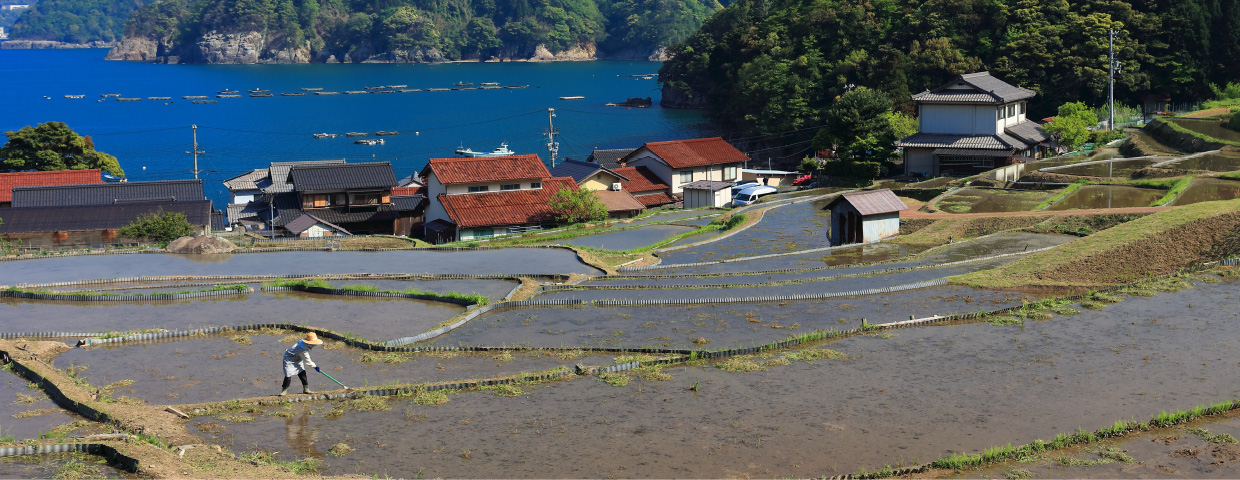






 Refine Search
Refine Search

